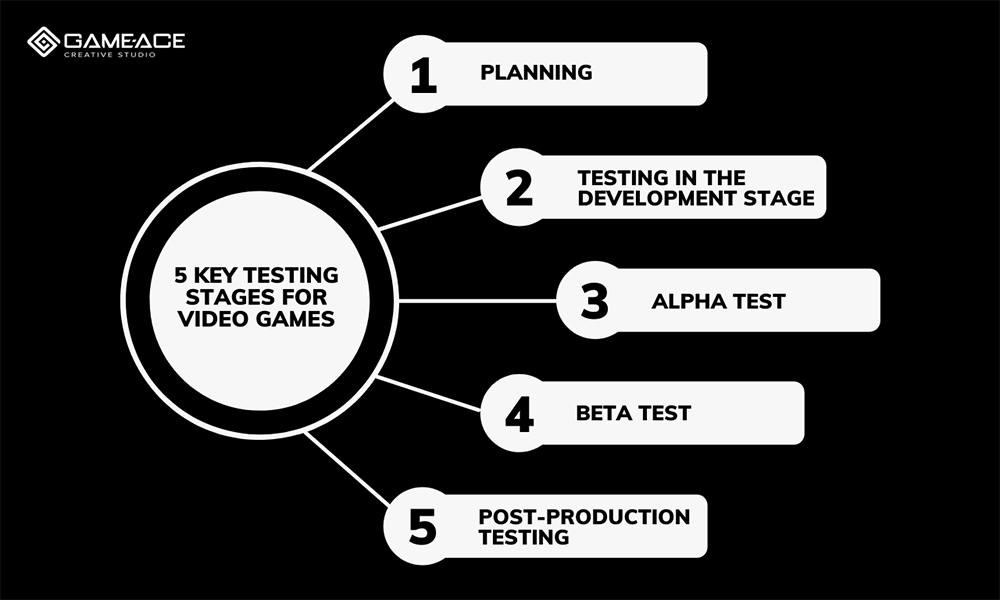Game Testing: Why It’s Crucial and How to Do It
In the ever-evolving and highly competitive gaming industry, creating a captivating video game is only half the battle. Ensuring a seamless and enjoyable gaming experience through game testing is equally essential. This article explores why game testing is crucial, the benefits it brings, and practical methods you can implement to perform thorough and effective testing.
What Is Game Testing?
Game testing, also known as video game testing or quality assurance (QA) for games, is the process of systematically evaluating a game to identify bugs, glitches, balance issues, and usability problems before its release. Essentially, it ensures that the gameplay is smooth, stable, and enjoyable for players across various devices and platforms.
Why Is Game Testing Crucial?
Incorporating rigorous game testing in the game development cycle is vital for several reasons:
- Enhances Game Quality: Detects bugs and glitches early, ensuring a polished final product.
- Improves Player Experience: Ensures gameplay mechanics are balanced and intuitive.
- Prevents Costly Post-Release Fixes: Addressing issues pre-launch saves money and reputation damage.
- Increases Market Competitiveness: High-quality games receive better reviews and user ratings.
- Ensures Compatibility: Validates that the game performs well on targeted platforms and devices.
The Game Testing Process: Step-by-Step Guide
Understanding the game testing process helps streamline QA efforts and maximize effectiveness. Below is an outline of key steps involved:
- Requirements Analysis: Understand game design, objectives, and platform specifications.
- Test Planning: Develop a detailed plan including test types, scopes, and schedules.
- Test Case Design: Create specific scenarios covering gameplay, UI, performance, and security.
- Test Execution: Run tests manually or using automated tools, systematically logging defects.
- Bug Reporting & Tracking: Document and prioritize bugs using software like Jira or Bugzilla.
- Retesting & Regression Testing: Verify fixes and ensure new updates don’t produce fresh issues.
- Final Evaluation & Sign-Off: Confirm game meets quality standards before release.
Types of Game Testing
| Type | Description | Purpose |
|---|---|---|
| Functional Testing | Checks whether game features work as intended. | Ensure core mechanics, controls, and UI function properly. |
| Compatibility Testing | Tests performance across devices and OS versions. | Verify cross-platform performance and hardware support. |
| Performance Testing | Monitors frame rate, load times, and responsiveness. | Identify lag, crashes, or memory leaks. |
| Usability Testing | Evaluates player experience and ease of use. | Improve game interface and user engagement. |
| Regression Testing | Confirms fixes don’t break existing features. | Maintain stability after bug fixes and updates. |
| Localization Testing | Validates game translations and cultural appropriateness. | Ensure accurate content for global markets. |
Benefits of Game Testing
Investing in thorough game bug testing and QA yields multiple advantages that directly impact your game’s success:
- Higher Player Retention: A bug-free experience keeps players engaged long-term.
- Positive Reviews & Ratings: Quality reduces negative feedback and boosts sales.
- Brand Reputation: Builds trust and encourages community growth around your games.
- Compliance & Certification: Ensures games meet platform-holder standards.
- Reduced Development Costs: Early bug detection lowers expensive last-minute fixes.
Practical Tips for Effective Game Testing
Looking to optimize your game testing? Follow these tips to implement an efficient QA workflow:
- Involve Testers Early: Begin QA parallel to development phases to catch bugs early.
- Use Both Manual & Automated Testing: Manual testing uncovers nuanced gameplay issues, automation handles repetitive tasks.
- Prioritize Bugs: Focus on issues impacting gameplay and stability first.
- Replicate User Scenarios: Test under realistic player conditions and edge cases.
- Maintain Clear Documentation: Detailed bug reports help developers understand and resolve problems faster.
- Continuous Testing with Updates: Test every build and patch to ensure ongoing quality.
- Leverage Beta Tests & Community Feedback: Early player input uncovers issues outside of controlled environments.
Case Study: How Game Testing Saved a Launch
A well-known example is the 2013 launch of a certain high-profile MMORPG expansion that faced severe backlash due to server crashes and bugs. The company implemented rigorous QA cycles including stress-testing servers and extended beta periods for their next expansion. The outcome was a drastically improved launch with fewer bugs, better load handling, and stronger player sentiment-demonstrating the critical value of comprehensive game testing.
Firsthand Experience: What I Learned From Game Testing
Having worked on multiple indie game projects, I realized that game testing is not just about finding bugs but understanding player psychology and gameplay balance. Sometimes, a feature might work perfectly from a technical standpoint but could confuse or frustrate players. Focused usability testing and gathering player feedback helped refine my games far beyond what initial coding tests could reveal.
Conclusion: Make Game Testing Your Priority
Game testing is an indispensable facet of video game development, determining whether your game will be a smooth, immersive experience or a buggy frustration for players. The benefits of thorough QA extend from technical stability to business impact by improving reputation and reducing costs. By adopting the right strategies-ranging from detailed test planning to embracing user feedback-you can elevate your game’s quality and success in a crowded market.
Start incorporating comprehensive game testing methodologies into your development process today to build better games and happier communities!











